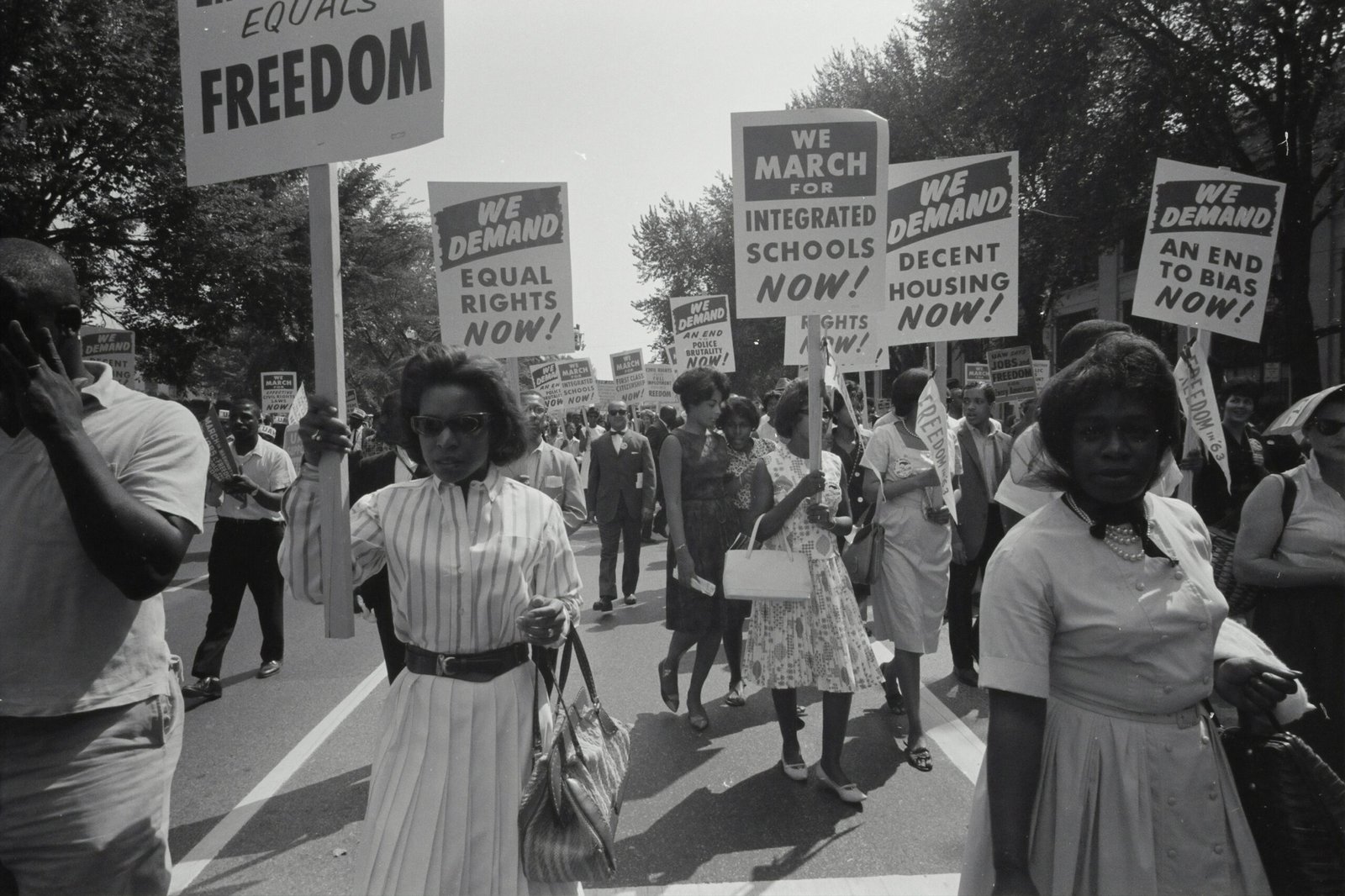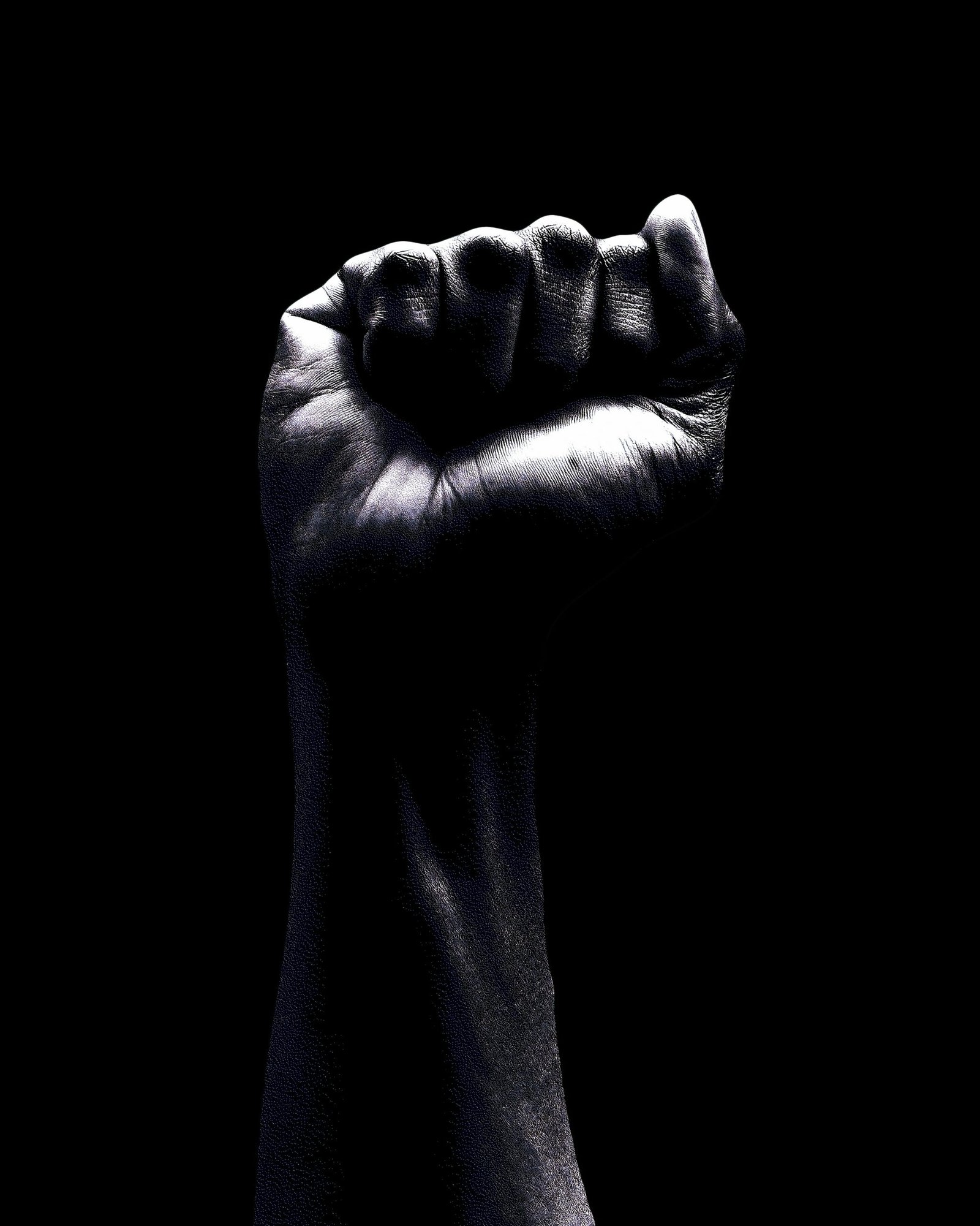Introduction to Jim Crow and the Black Codes
The period following the American Civil War saw the emergence of laws known as the Black Codes, which were designed to restrict the freedoms of newly emancipated African Americans. These laws served as a means of maintaining white supremacy and order in the South, effectively ensuring that African Americans remained in a subordinate position. The Black Codes imposed various restrictions on aspects of daily life, including labor contracts, voting rights, and access to public spaces, all aimed at perpetuating a system of racial hierarchy.
With time, these Black Codes evolved into what is broadly categorized as Jim Crow laws, named after a popular minstrel character that embodied racial stereotypes. Enacted primarily in the late 19th and early 20th centuries, Jim Crow laws institutionalized racial segregation across various facets of American life. These comprehensive laws mandated the separation of races in schools, public transportation, restrooms, and restaurants, essentially creating a societal framework in which African Americans were systematically disadvantaged.
The implementation of Jim Crow laws was met with devastating socio-economic consequences for African Americans. In a society that was meant to embrace liberty and equality, the stark divide enforced by these laws contributed to a long-lasting legacy of racism and inequality. The political disenfranchisement that arose effectively stripped African Americans of their rights to vote, thereby undermining their influence in shaping policies that affected their lives. As such, the historical context of both the Black Codes and Jim Crow laws is crucial for understanding the systems of oppression that have shaped America’s racial landscape. This introduction lays the groundwork for exploring their profound and enduring effects on society and the ongoing struggle for civil rights in America.
Historical Context of the Black Codes
The Black Codes were a set of laws enacted in Southern states following the conclusion of the Civil War in 1865. This period marked a significant transition in American history as the nation grappled with the implications of emancipation and the integration of formerly enslaved African Americans into society. The primary purpose of the Black Codes was to regulate the lives of the newly freed African American population and to ensure the maintenance of white supremacy in the South. By establishing a legal framework that restricted the rights and freedoms of African Americans, these laws effectively sought to control their movement, labor, and social interactions.
As various states devised their own versions of Black Codes, they shared common features aimed at suppressing African American civil rights. For instance, many states mandated labor contracts that required African Americans to work for low wages, effectively enforcing a system reminiscent of slavery. The absence of such contracts often resulted in severe penalties, including vagrancy laws that criminalized the lack of employment. This legislation not only aimed to curtail the economic independence of African Americans but also sought to reinforce a societal hierarchy that privileged white citizens.
Moreover, the Black Codes placed numerous restrictions on African Americans, such as prohibiting them from owning land, serving on juries, or testifying against white individuals in court. For example, in Mississippi, a law was enacted that forbade African Americans from engaging in business without a permit. Such regulations exemplified the systemic efforts to diminish the societal status of African Americans and obstruct their pursuit of equality. The legacy of the Black Codes would resonate throughout the Reconstruction era and beyond, shaping the ongoing struggle for civil rights in America.
The Rise of Jim Crow Laws
The transition from the Black Codes to Jim Crow laws marked a significant turning point in the history of racial segregation in America. Following the Civil War and the Reconstruction era, Southern states enacted the Black Codes aimed at controlling the labor and behavior of formerly enslaved individuals. While these codes established a framework for racial discrimination, they were soon replaced by a more rigid system known as Jim Crow, which became pervasive in the late 19th and early 20th centuries.
Jim Crow laws institutionalized racial segregation, creating a legal framework that supported discrimination across various aspects of life. The phrase “Jim Crow” itself originated from a minstrel character, symbolizing the oppressive attitudes towards African Americans. By 1896, the Supreme Court’s Plessy v. Ferguson decision upheld the constitutionality of racial segregation under the “separate but equal” doctrine, providing a significant legal endorsement for Jim Crow laws. This ruling further entrenched segregation, allowing states to maintain racially divided public spaces.
Education was one of the most affected sectors, as Jim Crow laws mandated separate schools for Black and white children, which were often vastly unequal in terms of facilities and funding. Furthermore, segregation extended to transportation, where public transport services enforced strict racial boundaries. For instance, Black individuals were often required to sit at the back of buses or use separate train cars, solidifying the notion of racial superiority among whites. Parks, libraries, and even restrooms adopted similar segregation practices, illustrating the extensive reach of Jim Crow.
The legal and social structures supporting Jim Crow not only institutionalized racism but also fostered an environment where racial discrimination became normalized. As a system of oppression, Jim Crow laws had long-lasting effects on African American communities, which felt the repercussions of segregation and discrimination for generations to come. Understanding this dark chapter in American history is essential to comprehending the legacy of racial inequality that persists today.
The Legacy of Jim Crow and the Black Codes
The legacy of Jim Crow and the Black Codes continues to shape the sociopolitical landscape of the United States, perpetuating significant disparities among African Americans. Enacted in the late 19th and early 20th centuries, these discriminatory laws sought to enforce racial segregation and disenfranchise black citizens, creating barriers that extend far beyond their original legislative intent. The long-term impacts of such policies can still be observed in various dimensions of life, particularly in education, wealth accumulation, and social mobility.
In education, the segregation of schools fundamentally hindered the development of a qualitatively equitable system. The schools predominantly attended by African American children received far less funding and resources, leading to a cycle of underachievement that persists today. Consequently, this educational disparity plays a critical role in perpetuating socioeconomic inequalities. African Americans often find themselves at a disadvantage in higher education and job markets, leading to limited access to opportunities and a lesser ability to accumulate wealth.
The economic ramifications of Jim Crow laws are also profound. Discriminatory practices in hiring, wages, and housing, rooted in the legacy of the Black Codes, effectively restricted African Americans from accumulating generational wealth. This economic disenfranchisement has led to enduring wealth gaps that reflect systemic racism entrenched in American society. Many African American families grapple with the consequences of these disparities, making it challenging to achieve financial stability and upward mobility.
Contemporary manifestations of this legacy further illustrate the ongoing struggle against systemic racism. Issues such as police brutality and voter suppression remain prevalent, echoing the painful history of African American oppression. These contemporary challenges often reflect a society still grappling with the ramifications of Jim Crow laws and the Black Codes, necessitating an ongoing dialogue and commitment to dismantle the structures that uphold such inequities.
Personal Accounts and Historical Examples
The legacy of Jim Crow laws and the Black Codes is deeply rooted in the personal experiences of those who lived under their oppressive regime. Individual narratives reveal the harsh realities faced by African Americans during this tumultuous period in American history. One poignant account comes from a civil rights activist who recalled the indignities of segregated public transport. During the Montgomery Bus Boycott of 1955, African Americans collectively refused to ride city buses to protest the segregation policy that forced them to sit at the back while white passengers occupied the front seats. This act of defiance highlighted the resilience of the Black community and was pivotal in mobilizing national support for civil rights reform.
Another significant event that exemplifies the struggle against Jim Crow was the sit-in movement that began in Greensboro, North Carolina, in 1960. Young African American college students staged nonviolent protests at segregated lunch counters, refusing to leave until they were served. Their courage and determination not only sparked similar protests across the nation but also played a crucial role in challenging the legality of Jim Crow laws. Personal testimonies from those involved in these sit-ins provide insight into the emotional and physical toll of standing up against systemic racism.
Alongside these accounts, the historical examples of resistance emphasize the tireless fight for equality. The formation of organizations like the NAACP and the Southern Christian Leadership Conference (SCLC) further reflected the collective spirit of African Americans. It was through the unwavering commitment of individuals and groups that the Civil Rights Movement gained momentum, culminating in legislative victories such as the Civil Rights Act of 1964 and the Voting Rights Act of 1965. These historical milestones serve as a testament to the enduring struggle for justice in the face of Jim Crow and its legacy in America.
White Americans’ Refusal to Acknowledge History
The complex history of racial oppression in the United States is often met with resistance from many white Americans, who struggle to engage with the harsh realities of the Jim Crow era and its lasting impact. This reluctance can be traced back to a variety of societal and psychological factors. Denial of historical injustices plays a significant role in this refusal. Recognizing the systematic oppression experienced by Black Americans not only challenges the sanitized version of American history but also threatens the foundational narratives that many hold dear.
Systemic privilege shapes this dynamic; for many white individuals, acknowledging the injustices wrought by Jim Crow and the Black Codes may require a painful reckoning with present-day privileges. This awareness can stir feelings of guilt, fear, or defensiveness, resulting in a tendency to avoid discussions about race and historical injustices. Such discomfort impedes meaningful conversations about how past injustices continue to shape contemporary race relations and social justice movements. The unwillingness to confront this legacy can lead to a compounding of ignorance concerning both history and its implications on current societal structures.
This refusal to acknowledge the reality of American history extends to debates surrounding reparations, civil rights, and systemic racism today. By failing to recognize the full history of Black oppression and the ongoing effects of discriminatory laws, many white Americans inadvertently perpetuate divisions. In doing so, they diminish the voices of those advocating for justice and equality. Engaging honestly with the past is crucial for fostering understanding and collaboration in contemporary discussions about race and equity, enabling a reevaluation of societal structures that have long benefited one group at the expense of another.
Contemporary Implications of Jim Crow and Black Codes
The legacies of Jim Crow laws and Black Codes continue to hold significant relevance in contemporary American society. Despite the formal abolishment of these discriminatory laws, the repercussions can be observed in various social, economic, and political spheres. Racial disparities persist, manifesting in areas such as education, employment, healthcare, and criminal justice. Studies indicate that systemic racism remains deeply entrenched, with minority communities often facing barriers that hinder equitable opportunities. The historical context provided by Jim Crow and Black Codes informs not only the experiences of these communities but also the policies that perpetuate inequality.
Moreover, the remembrance of these discriminatory practices plays a crucial role in modern social movements aimed at racial justice. The ongoing fight against systemic racism draws from the collective memory of the oppression experienced under Jim Crow and the Black Codes. Activists and organizations utilize historical narratives to highlight the urgency of current issues, advocating for changes that address both lingering effects and new forms of discrimination. This connection to history empowers individuals to challenge injustices and helps foster solidarity among various racial and ethnic groups.
In recent years, legislative measures aimed at redressing these inequities have been proposed and implemented. Initiatives focusing on criminal justice reform, voting rights protection, and equitable policing practices are essential in combating the residual effects of Jim Crow. Additionally, the acceptance of reparative policies and education reforms signifies an active recognition of past wrongs. The importance of acknowledging this historical context remains critical to advancing social justice and ensuring that similar injustices are not repeated. By understanding the implications of Jim Crow and the Black Codes, society can work towards a more equitable future for all individuals.
Path Forward: Acknowledging the Past
The legacy of Jim Crow and the Black Codes remains a significant influence on contemporary American society, highlighting the need for critical reflection and acknowledgement of this tumultuous history. To foster meaningful dialogue and healing, it is essential to confront the realities of systemic racism deeply embedded within various facets of life, from legislation to education. Educational reforms play a crucial role in this process; incorporating comprehensive curricula that cover the history and implications of Jim Crow can illuminate its impacts on current societal structures. By understanding the historical context, individuals can better grasp the contemporary issues that stem from these oppressive policies.
Community initiatives are equally vital in addressing the legacies of such injustices. Programs that encourage open discussions, workshops, and events aimed at promoting awareness can provide platforms for diverse voices, facilitating a shared commitment to reconciliation. Engaging community members in reflection and open dialogue allows for a collective understanding of how historical injustices have shaped present realities. Furthermore, creating spaces where individuals can share their experiences can foster empathy and understanding, encouraging a sense of solidarity and cohesiveness within the community.
Policy changes must also be prioritized to redress the inequalities perpetuated by Jim Crow laws and the Black Codes. Legislation aimed at dismantling systemic racism and promoting equity should be at the forefront of national and local agendas. Moreover, the pursuit of restorative justice initiatives can be instrumental in addressing the lasting impacts of discrimination and disenfranchisement. Each of these efforts to acknowledge the past serves as a foundation for building a society committed to justice and equality. By collectively confronting these historical injustices, we empower communities to transform their future while honoring the experiences that shaped it.
Conclusion: Reflecting on the Journey
As we reach the end of our exploration into the legacy of Jim Crow and the Black Codes in America, it becomes increasingly clear that understanding this historical context is not simply an academic exercise, but a pivotal necessity for fostering a more just society. The implications of these laws, which institutionalized racial discrimination and segregation, continue to reverberate through contemporary social dynamics in the United States. The fight against systemic racism remains a vital conversation, one rooted deeply in the injustices of the past.
By reflecting on the origins and consequences of the Jim Crow era, we gain insights into how these oppressive systems were designed to dehumanize and disenfranchise African Americans. The Black Codes served as a sobering reminder of the lengths to which society went to maintain racial disparities. This historical awareness is crucial for acknowledging the progress made and the substantial work still required to ensure equity and justice for all individuals, regardless of race.
Our role in addressing these legacy issues is not passive; it requires active engagement and a commitment to social justice. As we work to dismantle the remnants of racism, it is imperative to educate ourselves and others, advocating for policies that promote equality. This journey is not just about remembrance but about taking informed action to prevent history from repeating itself.
Looking ahead, envisioning a future marked by equality and justice hinges on our collective effort to confront uncomfortable truths and acknowledge the struggles that so many continue to endure. Committing to ongoing reflection and dialogue will not only help to heal historical wounds but also pave the way toward a society where everyone can thrive without fear of discrimination. The legacy of Jim Crow and the Black Codes serves as both a warning and a catalyst for change, calling us all to action in the pursuit of a more equitable future.



